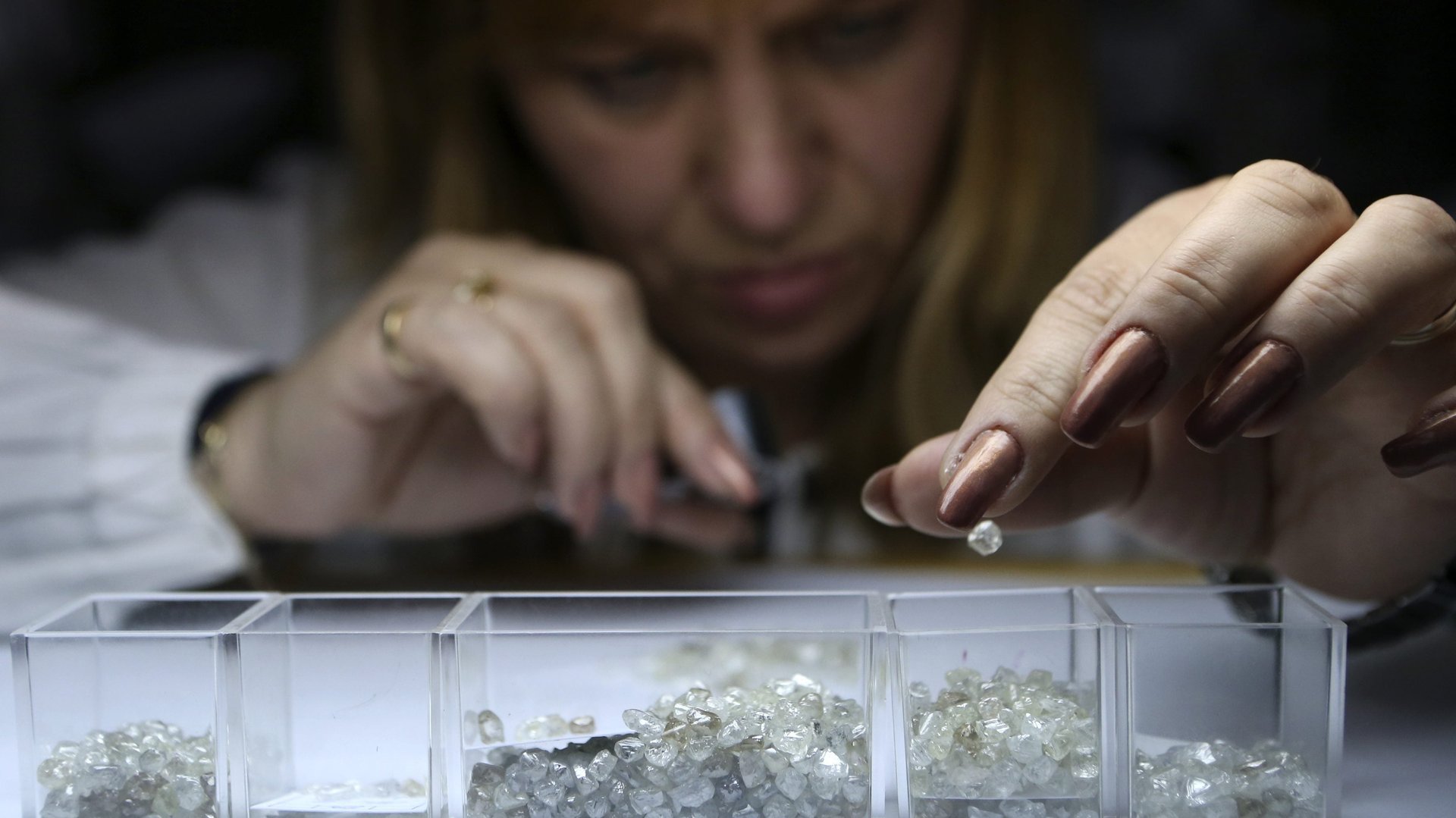Are Russian diamonds now conflict diamonds? Depends on who you ask
Russia has thwarted a Western effort to have its crude diamonds labeled as “conflict diamonds”—thwarted it so effectively that the Russia-Ukraine war won’t even be discussed at a crucial meeting of diamond producers this week.


Russia has thwarted a Western effort to have its crude diamonds labeled as “conflict diamonds”—thwarted it so effectively that the Russia-Ukraine war won’t even be discussed at a crucial meeting of diamond producers this week.
The phrase “conflict diamonds” refers to those that finance “violence by rebel movements and their allies seeking to undermine legitimate governments,” a definition outlined in its charter by the Kimberley Process, a global watchdog forum set up in 2003 to block the sales of conflict diamonds. The Kimberley Process includes 85 countries, as well as industry and civil-society bodies, and the specificity of its definition has felt problematic and arbitrary in the past. Diamonds mined by insurgent groups in Angola? Conflict diamonds. Diamonds mined by Zimbabwe, after the army seized a mine and killed 200 miners? Not conflict diamonds.
Ahead of the Process’ meeting in Botswana this week, several member countries—Ukraine, the EU, the US, the UK, Australia and Canada—suggested expanding the ambit of “conflict diamonds” to include violent state actors as well. The proposal was aimed at Russia, which is the world’s largest producer of diamonds by volume, turning out nearly a third of all uncut diamonds. Alrosa, which digs diamonds out of Russian land adjoining the Arctic Ocean as well as out of African deposits, is the biggest diamond mining company in the world. Roughly a third of Alrosa is owned by the Russian government, and another third by the Russian republic of Yakutia.
The proposal ultimately failed to pass. Every member would have had to agree, and so Russia’s small posse of support—Belarus, Mali, Kyrgyzstan, and the Central African Republic—was enough to scuttle the measure.
When is a Russian diamond not a Russian diamond?
Alrosa was among the earliest Russian companies sanctioned by the US Treasury in February, following the Ukraine invasion. But like most rough diamonds anywhere in the world, Russian diamonds are cut and polished elsewhere—typically in India, where 95% of diamonds are transformed beyond their crude mined state. By US customs law, these diamonds become Indian; there is no way to tell that they originally came from Alrosa. That sanctions “loophole” is still wide open.
Denominating Alrosa’s diamonds as “conflict diamonds,” though, would have been a way around the loophole. Indian polishers, for instance, are mandated to only import diamonds certified “conflict free” by the Kimberley Process, so Russia would instantly be deprived of the services of the largest diamond-processing industry in the world.
The Botswana meeting’s failure to even discuss the Ukraine war leaves individual countries and companies responsible for attempting to avoid buying Russian diamonds, said the Kimberley Process Civil Society Coalition, a group of nonprofits that participates as an observer of the Kimberley Process. The coalition has often challenged the Kimberley Process’ claim that conflict diamonds constitute fewer than 1% of diamonds in circulation.
“Never before was this conflict-prevention scheme…confronted with one member waging war against a fellow member country,” the coalition said in a statement. “The fact that several participants are turning to unilateral measures to stop diamonds from funding this conflict clearly demonstrates how the [Kimberley Process] and its Certification Scheme have reached their limits.”